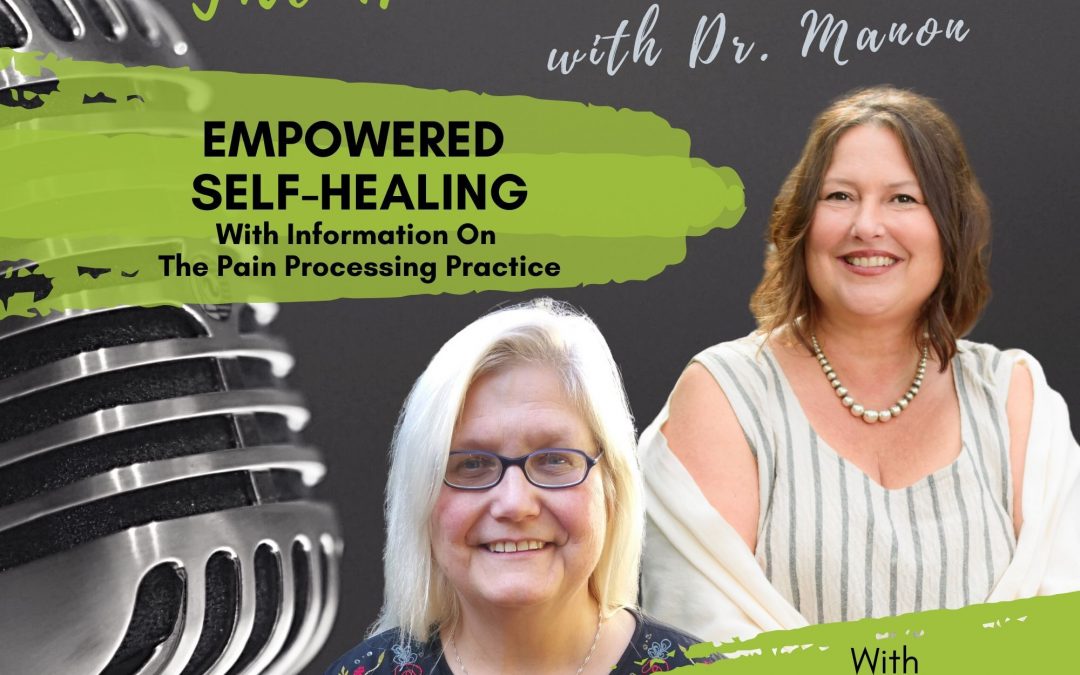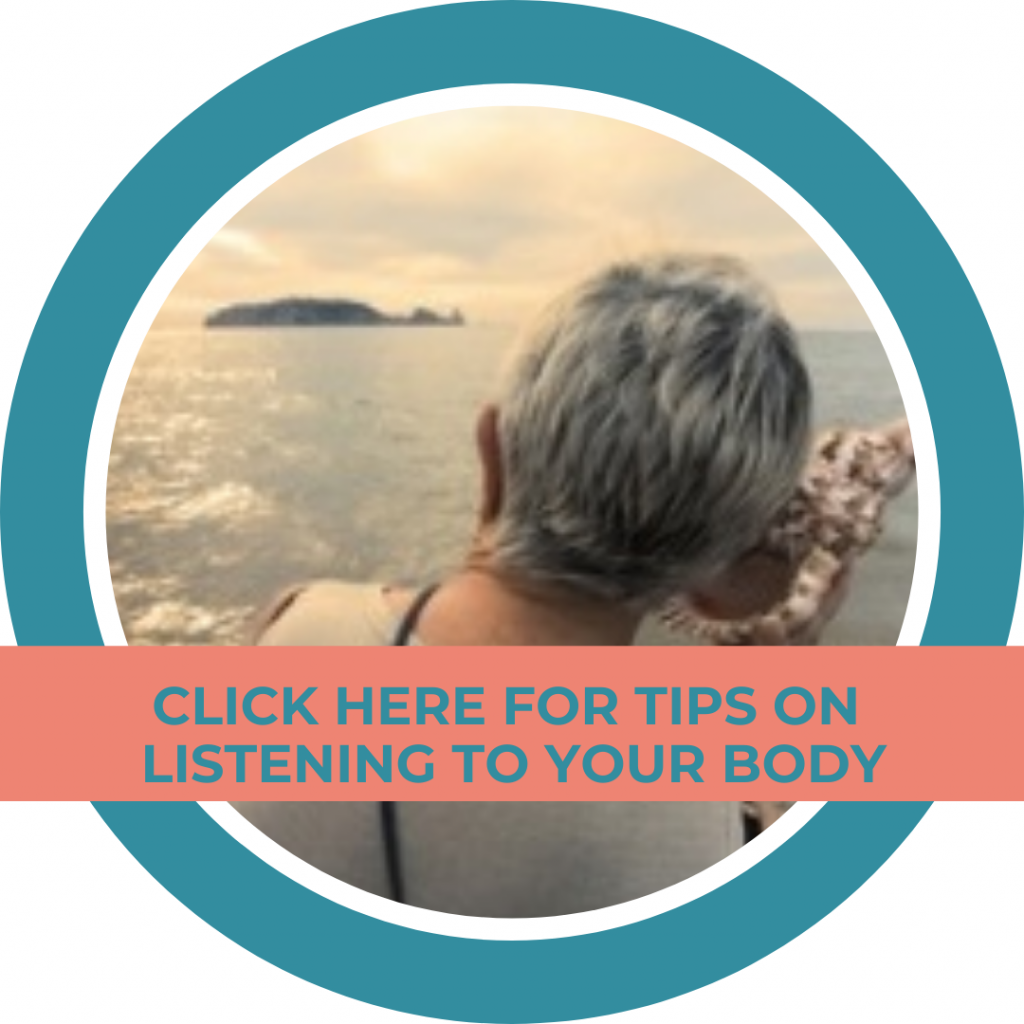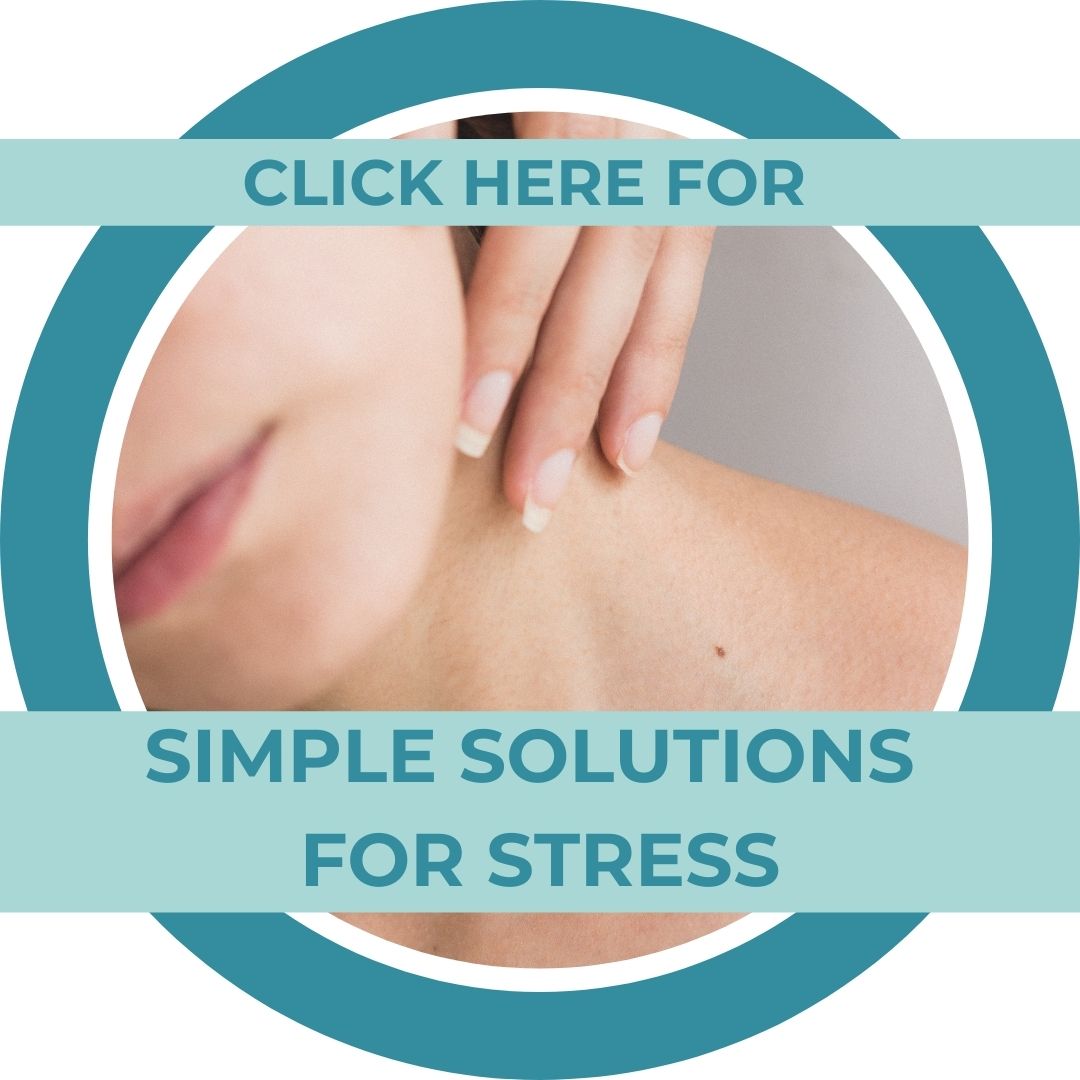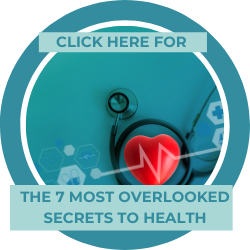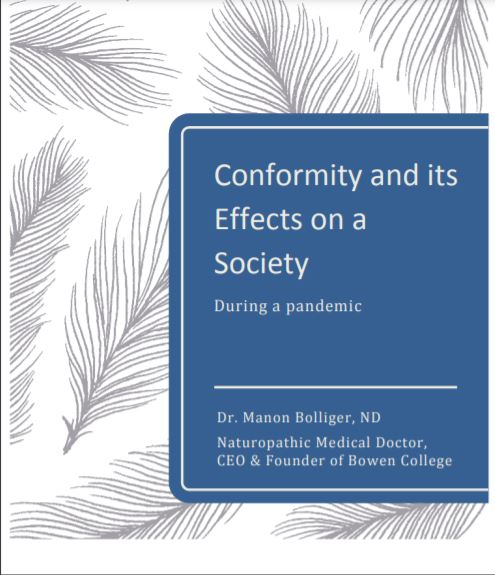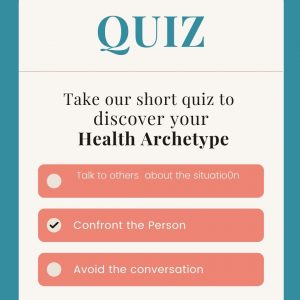Empowered Self Healing & the Pain Processing Practice: The Healers Café with Dr. Manon & Cindy Ann Olson
In this episode of The Healers Café, Dr. Manon chats with Cindy Ann Olson, a healer, coach, and author.
Highlights from today’s episode include:
At 5:00 – The Rebound Effect
At 5:45 – The girl with the broken arm
At 9:50 – The Pain Processing Practice
At 22:25 – The first step, self-observation
At 24:39 – The second step, changing your neuro pathways At 28:35 – The third step, taking control of your biochemistry
Cindy Ann: 18:03 Well, I would say most people in pain are also depressed on some level. I mean an awful lot of people without hope, I meet them bed bound and screaming and you know, that means that they’ve already taken themselves to the entire medical Western medical system and they’ve been basically told that, you know, there’s nothing else that can be done for them. And it’s unfortunate because that is a nocebo and no nocebo,s like placebo,s are incredibly effective. And I would think that Western medicine now would know that doctors should not say things like they did to me, Hey, by the time you’re 40, you’re going to be in a wheelchair and then you’re going to die.
About Dr. Manon Bolliger, ND:
Dr. Manon is a Naturopathic Doctor, the Founder of Bowen College, an International Speaker with an upcoming TEDx talk in May 2020, and the author of the Amazon best-selling book “What Patient’s Don’t Say if Doctors Don’t Ask.” Watch for her next book, due out in 2020.
SOCIAL MEDIA:
Dr. Manon, ND – Facebook | Instagram | LinkedIn | YouTube | Twitter
About The Healers Café:
Dr. Manon’s show is the #1 show for medical practitioners and holistic healers to have heart to heart conversations about their day to day lives.
Follow us on social media! https://www.facebook.com/thehealerscafe
About Cindy Ann Olson
When only 7 years old Cindy had disabling migraine and tension headaches,
as well as severe pain and less functioning in her hands and feet. Eventually,
Cindy was diagnosed with Charcot-Marie-Tooth disease (CMT), a rare
neurological disorder she inherited from her mother. The treatment offered by
the medical community was a complex array of powerful and expensive pain
medications, which did not eliminate the pain.
Driven to find an end to her suffering, Cindy began a life-long journey which has evolved into the Pain Processing Practice. Her journey has included the study of Chemistry and Botany at Drew University, Financial Planning at NYU, working on Wall Street, teaching sustainability and community gardening. Cindy is a specialist in sustainable agriculture, permaculture and holistic management. A certified herbalist and Reiki Master, she also practices numerous other techniques, therapies, and methods. But her formal education merely hints to the incredible journey to self-mastery and healing that she undertook which ultimately brought about the Pain Processing Practice.
Through her years of study and practice, she has gathered a vast array of tools, and a simple plan to use them, which she uses to heal herself and others.
SOCIAL MEDIA:
Facebook | Instagram | LinkedIn | YouTube | Twitter
TRANSCRIPT
Speaker 1: 00:03 Welcome to the healers cafe conversations.
Dr Manon : 00:17 Welcome to the healers cafe. And today I’m with Cindy Ann Olsen. And let me tell you just a little bit about her. I’m very excited to find out what methodology she’s created to help people in pain. So Cindy, Is also is the founder of empowered self healing, is an internationally known healer and pain-free specialist whose expertise is helping those in pain change their relationship to pain and suffering, sufferers rapidly, find relief from chronic pain, heartache, headache, backache, knee, leg joint, migraines, and so much more. Her proven program features a life changing proprietary practice known as the pain processing practice, and Cindy skillfully weaves ancient healing techniques, modern neuroscience and leading edge biochemistry, which works together synergetically to allow for profound physical, mental, emotional, and spiritual transformation. So I’m super excited to find out more and also to find out really also your story.how did you, how did you come to create this and what, you know, what’s your kind of your, how did all this begin and you’ve been at it for like 35 years or almost 40 years now. So tell us,
Cindy Ann: 01:54 Thank you so much for having me. I am so excited to be at the healers cafe. What really happened with me is I expected to be in pain. I was told very early on in my life that I was going to be in pain and I was going to die young. I have a neurological disorder that’s you know, very few people in the world are affected by it. And unfortunately what they’ve done in the last 40 years is basically figure out all the different types of it, but they haven’t come up with any solutions for it. But I, recognized when I started getting migraines when I was seven, that the medical system really didn’t have anything to help me. I mean, they gave me medication. Later on I was told I could get an annual operation.
Cindy Ann: 02:51 But basically they were just going to be experimenting on me and I could live on disability. Well, I decided I didn’t want to have a lifestyle like that. So I recognized that I lived in New York city and it was incredible opportunity. I became a Guinea pig. In lots of ways. I tested out some of the new biofeedback at that time. All sorts of support groups. I went into, learned a, a great deal of different modalities. Went to lots of sleep studies, all sorts of things. But mostly I seem like I was getting at least five medical degrees at five different medical libraries in New York city. So that I could really get the, research that was available at that time and really understand how my body worked, how my mind was really connected to my body, which was really revolutionary back in the early eighties.
Cindy Ann: 03:57 And also really understand the history and what people had done before from all over the globe. early eighties. That was just kind of, you know, a little bit touched on, but the, the mind body connection, but it wasn’t like known everywhere and you know, they’re still sending a specialist of the mind specialist and the body specialist of the body parts, . So that’s quite something. So yeah, tell us for, go on. So what, what I found fascinating was that in the reading back into the history and different traditions around the world that basically people had learned to be pain-free. So it gave me hope. I have persistence and I had hope. So many of my relatives gave up really early on and went the, you know, the route of lots and lots of surgeries and lots and lots of medication.
Cindy Ann: 05:00 But by the time I was in college, I had decided that I was going to get off my medication because I had read a study about rebound effect from medication and since I had terrible headaches, I didn’t want to get rebound headaches just from the medication. So that was a really a break through for me, recognizing that the medication could then cause a problem. Right. And yes, definitely. And how long had you been on medication then? Because this started as a child, right? I started as a child and I had been on medication for at that point, at least 15 years, you know. So what I also found fascinating, what I, what I found fascinating is I checked different traditions because everyone comes to New York and they had different ways of doing it. Like I went and I saw a girl who had a broken arm at the time, but yet gave a three hour presentation and answered questions and he didn’t seem to be in pain.
Cindy Ann: 06:12 So of course I went over and asked her, you know, aren’t you in pain and you know, please get to the hospital. There’s one down the street. But she said, no, I’d been meditating for 30 years. So, she had a broken arm, like as in dangling on unthinkable, dangling. Okay. Which may need to be kind of put back. And what was she doing? Well, she didn’t, you know, I guess it had happened and then she had gone to these event. Wow. Okay. No, but I recognized if she could do it exactly. It can be done. It can be done, but I didn’t want to wait 30 years.
Cindy Ann: 06:59 So when I, you know, basically got off my medication, I had already in place, understood my, how my body worked a little bit and that I was more afraid of the pain, then the actual sensation of the pain. So I then started to separate that and I started to control my biochemistry mostly through laughter and breathing and some very simple things. And I started to be more careful about what I ate when I ate it, you know, how I slept, when I slept, all those sorts of things. And it evolved over time til I recognized that I had a particular standard operating procedure. And because I don’t know where my body parts are very well, you know, it’s part of my disease. I had to practice sitting down and doing this and that. And I originally practiced physically, but then I realized I could do this, like an athlete.
Cindy Ann: 08:04 Exactly. Yeah. And I could do this all through my mind. So I, you know, continued to do that and really continue to regulate myself. So now, even though the disease has progressed, I am able to go from a paralyzed state every morning to being able to get up and walk around and, you know, have a normal life. Now. I do fall periodically, but I’ve learned how to do that and I don’t get upset by it. Right, okay. You know, so, so part of it is with this particular condition, then your body doesn’t understand how to move. Like you have to teach it how to move ? Well, what I would say is I basically have a quote unquote burning sensation at all times and why people take a lot of medication for it and neurological diseases, they have a tendency to do that. Yeah.
Cindy Ann: 09:02 So different sensations of pain really mean something else. You know, if it’s stabbing, if it’s burning, if it’s throbbing, they all have different ways to handle them. But basically my body gets paralyzed and it also seems to quote unquote be numb. So I don’t know where my very various body parts are. And over time it eventually stops your respiration. But because I can move so well, I have full intentions of living a normal lifespan.so then is part of what you’ve invented through all the research you’ve done and all that is, is is a methodology that you’ve been using yourself, obviously the living, walking proof of it, right? Yeah. So I, why I call it the pain processing practice is I continuously process pain. Okay. I use pain as a signal to let me know if something is going wrong, but I don’t live in the suffering of the burning sensation.
Cindy Ann: 10:19 Okay. Interesting. Yeah. So just like you process trauma, something happens to you, it’s terrible and use like the EMD or something like that to let this go. I do it continuously. So what I’ve done is I’ve understood what my unconscious, you know, has done and I’ve changed my neural pathways so that I don’t have to live in their suffering because we all have a reference system that we go back to what we have done. Now. This is great because we don’t have to relearn to walk, we don’t have to relearn to drive a car. So I’m not saying that we need each everything conscious by any means, but what I do is I’ve made things conscious that we’re unconscious and then when I like have learned to move in a specific way or whatever, then I make it unconscious again. Okay. And this is done.
Dr Manon : 11:20 Yeah. this, I can really relate to what you’re saying. Because it’s like bringing from the subconscious a piece that wasn’t working for you. Right. Then shifting it through, through what then? Through repetition or how do you, how do you, I mean typically repetition and that makes it or makes it like a, you know, on the back burner and makes it like just is there something more that your methodology does or what you explain a little bit more about this. Different people are focused in different ways. Some people are very body centered, some people are very intellectual. I mean they’ve had different histories. Some people have, you know terrible things have happened to them and it’s really affected their body. Some people live in a location like a cancer alley that they’ve had so many environmental stressors. I look at everyone as unique obviously because they have different genetics and they’ve had different stressors in their life.
Cindy Ann: 12:29 But you have to kind of break that down and figure out what particular modality is going to work for you. So I have something I called the toolbox wizard and I have basically over 400 different modalities. I know 200 really well, but I know 400 plus , you know, really work well with people in pain. And I ask people a series of questions and then basically instead of being neurotic, like I am knowing all these various things, people only have to really learn of five or maybe six different things for their own particular toolbox. So if you have like you’re an artist, right? And you’re very much visual and things like that, art therapy or color therapy can help a great deal. You know, it, what I suggest is really going to help the actual individual and what works for you may not work for your brother right now.
Cindy Ann: 13:31 There are certain things like paying attention to sleep, paying attention to diet, learning a breathing exercise, having a happy place. That’s usually with creative visualization or guided imagery, however you want to do that. You know, there are certain things like I, I laugh actually for five minutes at a time, you know, at least four times a day. And I do that because that works for me because I need to keep my natural endorphins To really go into my you know, receptors on a regular basis. Now I, you know, I suggest that because everyone knows how to laugh no matter how it sounds. Right. And I know how to laugh spontaneously. But the great thing is all around the world there are laughter clubs. Exactly. There are, I was going to say, it is actually a thing that you don’t have to do by yourself and feel crazy though.
Cindy Ann: 14:33 I’m going to exactly why I’m doing it. So, but that’s a very quick way. Even smiling can change things for you, right? So there are lots of ways to create your own endorphins and I think that’s taking control of your biochemistry and when you bring in your endorphins, you’re also going to take your serotonin and dopamine levels up higher. Now this is a time of year that people are, you know, having shorter days. That affects a lot more people than is really recognized. Some people have something called seasonal affective disorder and they know what to disorder and they have, you know, light boxes and things like that. But other people just kind of like, ah, I want to sit by the fire and you know, be warm and everything like that. But that is going to affect your level of pain. Yeah. So you have to really separate all the things that you’ve done is patterns in your life and what your actual habits are.
Dr Manon : 15:36 And are they actually increasing your pain or are they lessening it? Right. Yeah. That’s interesting cause I, I’ve seen it with my own patients, you know, that a big factor that I’ve noticed is sleep that will impact their ability to, it’s like the threshold for pain changes. Absolutely. You know, so that’s often what the first thing you know, to look at. And so you, you will you obviously address that as well in this methodology? Absolutely. I think that that is a telltale sign. Like I actually never learned how to sleep and you know, I’ve been in lots of steep studies and lots of sleep labs over the years just because I wanted to understand. Right. How that, you know, is it that too much light comes in cause you know, the sleep labs are really set up so they have the perfect sleep temperature, they have the perfect beds, they have the perfect desk as that, so they can eliminate all sorts of things that might not be eliminated at home.
Cindy Ann: 16:43 I lived in New York city with not double pane windows for awhile and the city noise was incredible. So, you know, you have to kind of separate what is environmental for you? What are your habits? Do you know, do you, actually have all your electronics around you when you, when you go to sleep and how is that affecting you? I mean there’s lots of different ways, but one of the ways that I’ve learned over the years is that different people have sleep schedules that work for them and you really have to start investigating that. I had sleep. The other thing that I’ve noticed is attitude. You know, like that comes with a lot of people in pain and I, I can understand it if they don’t feel like they can control their pain. There’s a lot of either blaming, blaming the world or blaming themselves.
Cindy Ann: 17:43 A lot of sort of victim mentality, you know, it’s happening. Why is this happening to me, kind of thing. So how do you deal with with that? Well, I would say most people in pain are also depressed on some level. I mean an awful lot of people without hope, I meet them bed bound and screaming and you know, that means that they’ve already taken themselves to the entire medical Western medical system and they’ve been basically told that, you know, there’s nothing else that can be done for them. And it’s unfortunate because that is a nocebo and no nocebo,s like placebo,s are incredibly effective. And I would think that Western medicine now would know that doctors should not say things like they did to me, Hey, by the time you’re 40, you’re going to be in a wheelchair and then you’re going to die.
Cindy Ann: 18:40 I mean, you know, Hey, I, a lot of people would agree with that and do doctor’s orders. So what I would say is it’s quite normal for you to be depressed or anxious when you’re in pain because being in acute pain is what mankind or humankind had done for millions of years. Something happened. We got, you know bitten by wolves or something like that, and we started to bleed and either we got better or we died. This whole chronic pain thing has really only happened as Western medicine has been able to figure out certain things about fixing the body. But think about the fact that there’s Phantom pain. I’ve met people there. They don’t have a limb, and yet they feel that their leg is in pain. Well, if they don’t have a leg, it’s so odd that their leg would be in pain, right?
Cindy Ann: 19:38 So you have to recognize that it’s not just in the body and it’s not just in the mind, but it’s emotional also. So you have to say, Oh, if I’m depressed, how am I going to lessen my depression? But guilt, shame, blame comes with chronic pain. People are ashamed to say, well, I’m in pain. I’m not going to be able to go such and such and their families interactions, you know, people co-regulate for their other people that are around them. And if they say, well you’re kind of lazy, you know why you saying you’re in pain? I mean my father was in bed for nine months when he had been, you know, working for the you know, corporate America and he, cause he had a, a back spasm and they let him stay in bed for nine months. But the thing was other people didn’t understand.
Cindy Ann: 20:38 People would come over and say, well why don’t you just get up? You know, they thought that he was a malingerer. So the point that I’m making is ,absolutely right on when you said that it’s a total experience, but for me it’s a lifesaving signal. Yeah. If I have something that is in pain that is not normally for me to feel, then I say, ah ha, maybe my bag is to heavy Say, okay, I have to alleviate this from my life. But an awful lot of shame is really put by society and there’s so many other people onto the person who is suffering. Yeah. Yeah. You know, I’m, I’m just amazed that doctors will say, well, you know, they’re getting some kind of secondary gain. They don’t really want to go to work.
Cindy Ann: 21:43 I, everyone needs a purpose. Everyone needs a reason to get up. But when you’re in pain and you’re in pain long enough, those things are going to fade from your existence. And how were you going to heal? Yeah, concept of the healing cafe I think is wonderful because people are always looking for cures. But when it comes right down to it, we actually heal and we heal over time and a lot of different levels. All right. I know that the pain processing practice is complex, but I have three very simple principles. But the first one I find that people take longest, and that’s simply noticing and actually developing self observation because we are told from when we were young, we shouldn’t be selfish. We shouldn’t notice ourselves. We shouldn’t, you know, we have all these shoulds and shouldn’ts and you know that isn’t actually healing at all if we’re so divorced from, from the fact that we can’t even say, Oh, our hand hurts. Everything seems to hurt. Right? I mean, I just met a woman who had been walking on a broken leg for two weeks before she actually went to the hospital. And I said, how could you have done that? Just like I asked a girl, she said, well, I expect to be in pain all the time and since my leg could bend, I figured it couldn’t be broken.
Cindy Ann: 23:31 But she didn’t think enough of herself. Right. She’s helping everyone else, but she didn’t actually think enough of herself to go and get checked. And now, you know, they’ve actually measured her legs and they’re not the same length anymore. Wow. Yeah. So that’s an extreme case. But you know, I mean, we do things a lot more out of habit and belief than we actually realize. Yeah. Yeah. And, and I think you’re right, like there is a perpetuation of this disconnection from our body because if we actually connected to our body, we would start listening to it, right? And we would, we would notice. So I really love that. That’s yeah, it’s very concurrent with what I’m noticing that starts to make the difference. It’s kind of bringing in consciousness to the body and, and that’s the first, definitely the first step in. So what’s your second step?
Speaker 3: 24:39 Well the next, the next step I really call it just changing your, your neuro pathways and that’s basically working on your story, your beliefs, understanding what your triggers are, understanding all the things that you just do on a habitual basis. You know, really starting to record all the things that you’re self observing. Right? So there’s so many apps now and so many other ways to do it, but I mean, I literally used to bring cards with me and just write down, Hey, I ate this for lunch, I did this and that, and then would collect it over time to see what things affected me so I was in a support group you know, fairly early on and there was a woman who basically was incredibly triggered without knowing it, by the color red. And she wore red all the time because she looked lovely in it and she had red handbags and everything else.
Cindy Ann: 25:47 And, but I noticed if she wore another color, she seemed happier and didn’t seem to be in as much pain. So it can be very odd things upset. Yeah. You know, and without any recognition. And also you really have to work on belief because if you believe that you’re at 30 years old, have the body of a nine year old, you will. Yeah. If you believe that, you know, that’s why I said the no seatbelt telling me I was going to be in a wheelchair. You know I, I disagreed with it, but other people, you know, I know have absolutely believed it. Yeah. And they do use with cancer patients all the time. Oh my gosh. Tell me about it. I actually had stage four cancer, so which I healed naturally
Dr Manon : 26:43 From, but literally under, you know, like how could I do this? How could I walk out? How did, why didn’t I do hysterectomy? You know, I, I have three children, how do I dare to be so selfish, et cetera, et cetera. And it was, it was really unbelievable. I was then still not your father doctor. Right. So I had already helped other people through this and I just hadn’t noticed myself, you know, my own circumstances. Which then prompted me to do some much deeper inner work and find out, you know, take a bit of my own medicine which was really introspection, noticing and connecting and and asking questions, you know, like deep questions on like, what’s going on? And yeah, and dealing with the things that, you know, it’s easier to sort of say, well, this can’t be really that important.
Dr Manon : 27:39 It’s not really affecting within And when you pay attention, it really is, you know. So anyway, I know, and I, I know so many patients come in saying, Oh, well there’s no point in doing any treatment or anything because my whatever my slip disc, it’s imminent, it’s going to you know, cut my vascular circulation or it’s going to impinge my nerve completely or I won’t be able to restore it. Or it’s like really like, you know, it’s like, it’s so not true from what I’ve seen and what people can heal that I just can’t believe. And like, and like you said, there’s, there’s oodles of studies on, on nocebo effect. Like, have they not read those studies? You know, it’s like, it’s happening. It’s shocking. Anyway. Okay. Our time is wrapping up i,ll ask your third point and also, so let’s do that first.
Cindy Ann: 28:35 So, the, the next one is that really taking, taking control of your biochemistry, really understanding what goes on and how to change much pain is actually increased or decreased by your body temperature. So understanding how to do that, how to calm your heart rate. So many people when they get stressed, their heart rate increases and that usually also causes more pain. So to actually control that, your blood pressure, all sorts of other things. Those are all very controllable. And what’s wonderful is you then have options. You have options when you know, I mean we just had Thanksgiving and how many people are stressed during that time, right? Of meeting those relatives that just, they disagree with the politics and everything else and they get all very stressed. So how many stressful situations do people allow their biochemistry to Just go wild and change their emotions.
Speaker 3: 29:42 Yeah. So when your emotions are all wrapped up and you feel that you have no choice, you always have choice and that allows you to change your perceptions. And once you get control of your perceptions because you have control of your biochemistry, then you don’t have to keep cycling. Right. And pain is an incredible downward cycle. It’s usually understanding the , separating your pain cycle from your fear cycle. And that’s really what the third principle really helps people do. It’s a little bit more complicated than that. As I said, we’re changing what you know, unconscious to conscious at least for a little while. And usually they change people’s you know, brainwaves because that also helps and learning how to rest and sleep and, you know really take true control of your reality, if nothing else. And just on that point, I’m so curious, I wish we had significantly more time, but I’m keeping the episodes of almost the same timing.
Dr Manon : 30:52 But so with the brainwave change, is this through a, like a, a technology and sound stuff or are you doing in a with a consciousness process or one thing? Just like biofeedback? I thought it was going to be in everybody’s office and I have a very small biofeedback machine that I work with people. Sound therapy, true sound therapy is when you get electrodes all set up and you learn how to get into your Paristitic nervous system. And that is really a key to being able to control your experience because that allows you not to go into flight and fight and on and all the various other, you know, possibilities freeze. And that allows you to basically relax. And when you react and take the tension out of your body, you are going to lessen your pain. Yeah. So what’s, what’s incredible is we have this ability to self heal.
Cindy Ann: 31:57 You did it from cancer. All over the world. People are self healing and Western medicine. Honestly, there’s certain situations if I get, you know, run over by a bus, get me to the hospital immediately. But it’s not helping people with diabetes and lots of autoimmune diseases and other things that are our chronic situations. And I think of pain as lifesaving and necessary because people have certain conditions and they don’t feel pain and they have usually very short lives. So I feel blessed that I actually have a pain signal. But I’ve also learned that I don’t need to live in the past. I can continually process if it’s not telling me information I need.
Dr Manon : 32:48 Anyway, amazing. This is yeah, it’s, it’s quite a, quite a story and, and a very thought out system that I can see why it needs to be individualized, but the principles are, you know, are, are general and, and they’re universal. Exactly. So before we get off do you have any way that people can find out more about you or any book or PDF or anything that they could get from you?
Cindy Ann: 33:24 Well you can find me on Amazon. I have a book and it’s just an overview because I originally went to the publishers with a couple of thousand pages and you know, they basically said, no, no, that’s not gonna work. So I also want to give all of your listeners a guide to the pain processing practice. It’s very short. And I think that it really gets to the heart of the matter. And what’s wonderful is then you can really think about your own standard operating procedure. You have a way of living your life already. And if you’re in pain, you’re going to need to change that. So you know, and it talks a little bit about that, the toolbox. But I’m going to be getting, I,m getting an app made for the toolbox wizard so that people will be to get that available, not just my clients. So there’s going to be a lot more coming out. The next book will be ready before Christmas and that actually is a sleep book about how to sleep short periods of time and actually get the rest that you need. Yep. Okay. And you know, all sorts of other things cause I kind of became a sleep expert over the years, I’m sure.
Dr Manon : 34:46 Okay. Well that’s wonderful. Okay. So so you’ll give us the link and we’ll put that on your page. And well this has been really interesting and I just really love hearing endless possibilities and given what you’ve gone through in your own, life and this whole process and that you’ve been able to help so many people this is, it’s amazing to share this. So thank you very much.
Cindy Ann: 35:15 And I think that you are actually changing Western medicine and that’s what we need to cause we’re getting sicker by the minute. So yes, thank you for all your work.
Dr Manon : 35:28 Yeah, thanks. It definitely takes a team.
Speaker 1: 35:37 [Inaudible] Thank you for joining us. For more information, go to dr [inaudible] dot com [inaudible].
